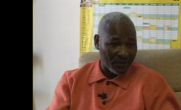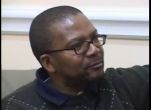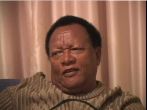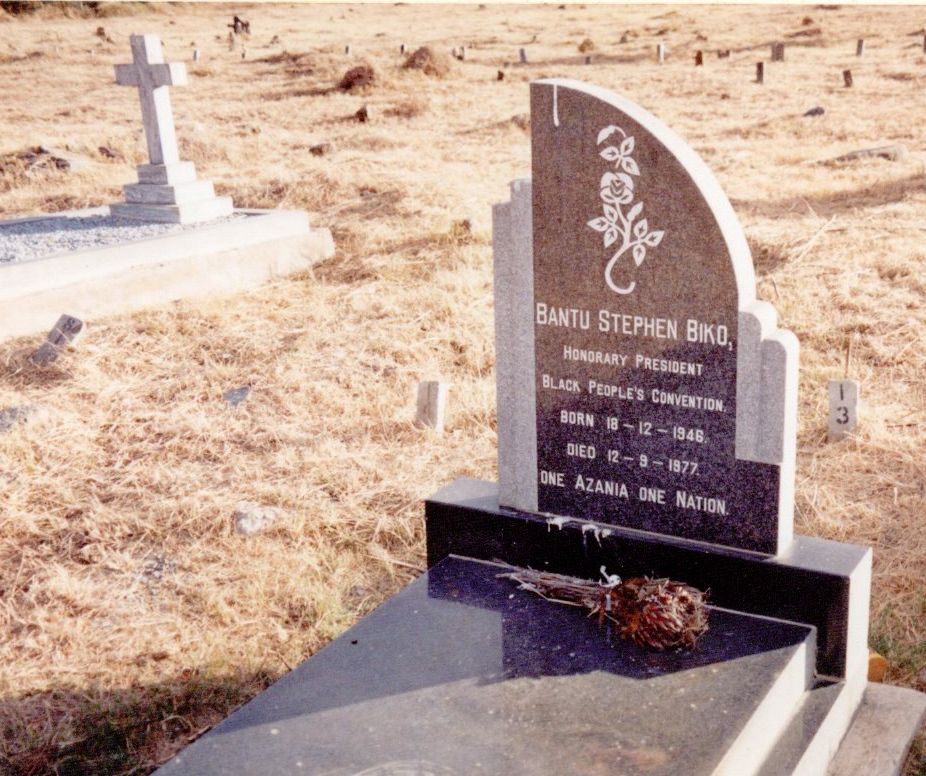Black Consciousness Movement
Video Interviews
 "We heard a lot about Steve Biko, we heard a lot about Mandela, we heard a lot about Sobukwe."
"We heard a lot about Steve Biko, we heard a lot about Mandela, we heard a lot about Sobukwe." Video interview segment with Roseberry Sonto [3:02]
2007
 "That was the first march I took part consciously, and I was very angry at what had happened."
"That was the first march I took part consciously, and I was very angry at what had happened." Video interview segment with Shepi Mati [4:07]
June 18, 2007
 "... the most important political formation in South Africa has in fact been the Black Consciousness Movement."
"... the most important political formation in South Africa has in fact been the Black Consciousness Movement." Video interview segment with Ben Khoapa [3:00]
May 7, 2006
 " ... and that is why Steve [Biko] said, "The most dangerous weapon in the hand of the oppressor is the mind of the oppressed."
" ... and that is why Steve [Biko] said, "The most dangerous weapon in the hand of the oppressor is the mind of the oppressed." Video interview segment with Patrick Mkhize [1:33]
May 8, 2006
Audio Interviews
"...we knew we had to work with people... therefore it was very, very easy for us to just become involved."
Audio interview segment with Peter Jones [7:09]
April 22, 2006 Athens, Ohio, United States.
Audio interview segment with Peter Jones [7:09]
April 22, 2006 Athens, Ohio, United States.
"...the establishment of BCP was [an] ecumenical initiative ..."
Audio interview segment with Peter Jones [3:53]
April 22, 2006 Athens, Ohio, United States.
Audio interview segment with Peter Jones [3:53]
April 22, 2006 Athens, Ohio, United States.
"They made footwear, sandals, stuff like that ..."
Audio interview segment with Peter Jones [3:50]
April 22, 2006 Athens, Ohio, United States.
Audio interview segment with Peter Jones [3:50]
April 22, 2006 Athens, Ohio, United States.
Summary
In 1969, when organized black opposition to apartheid was virtually quiet, university students formed an exclusively black student organization, the South African Students Organization (SASO). This was the beginning of the Black Consciousness Movement (BCM) that focused on cultivating the ability of black people to change the oppressive situation in South Africa by rejecting the ideology (and eventually the system) of apartheid. Black Consciousness (BC) adherents sought to liberate black people psychologically through “conscientization,” or the realization of black self-worth and the need for black activism. They stressed economic self-reliance and a return to African culture and values. They also redefined “black” to include all people of color who experienced racial discrimination under apartheid, and they worked to create a united black front.The BCM re-energized resistance to apartheid and spawned a number of political and community organizations. For example, the Black People’s Convention (BPC) acted as an umbrella organization and political wing and the Black Community Programs (BCP) focused on black community development. The death in detention of Steve Biko (one of the founders of the movement) and the subsequent banning of BC organizations and leaders in 1977 halted the movement as it was known in the 1970s. BC adherents formed the Azanian People’s Organation (AZAPO) in 1978, which sought to carry on the work of the BPC, but put greater emphasis on workers and economic socialism. The Azanian Youth Organization (AZAYO) and the Black Consciousness Movement of Azania (BCMA, an external organization until 1994) are among other post-1977 BCM organizations that were active throughout the 1980s and 1990s, up to the present day.
Related Essays:
Web Documents
Magazine Article: "Black Students' Manifesto", SASO Newsletter
[more info]
[Go to source directly and leave this site]
[more info]
[Go to source directly and leave this site]

Magazine Article: "SASO Opinion: African Organizations - The Way to Unity", SASO Newsletter
[more info]
[Go to source directly and leave this site]
[more info]
[Go to source directly and leave this site]

Historical Document: "I Write What I Like: We Blacks", SASO Newsletter
[more info]
[Go to source directly and leave this site]
[more info]
[Go to source directly and leave this site]

Journal Article: "Introduction", Black Review
[more info]
[Go to source directly and leave this site]
[more info]
[Go to source directly and leave this site]

Timeline: "Timeline: The Black Consciousness Movement"
[more info]
[Go to source directly and leave this site]
[more info]
[Go to source directly and leave this site]

Journal Article: "Chapter 12: Arts and Entertainment", Black Review
[more info]
[Go to source directly and leave this site]
[more info]
[Go to source directly and leave this site]

Magazine Article: "Aims and Objects of AZAPO", Frank Talk
[more info]
[Go to source directly and leave this site]
[more info]
[Go to source directly and leave this site]

Magazine Article: "AZAPO's Fourth National Congress", Frank Talk
[more info]
[Go to source directly and leave this site]
[more info]
[Go to source directly and leave this site]

Suggested Reading
From Protest to Challenge: a Documentary History of African Politics in South Africa 1882-1990
By Thomas Karis, Gwendolen Carter, Gail Gerhart
[more info]
By Thomas Karis, Gwendolen Carter, Gail Gerhart
[more info]




